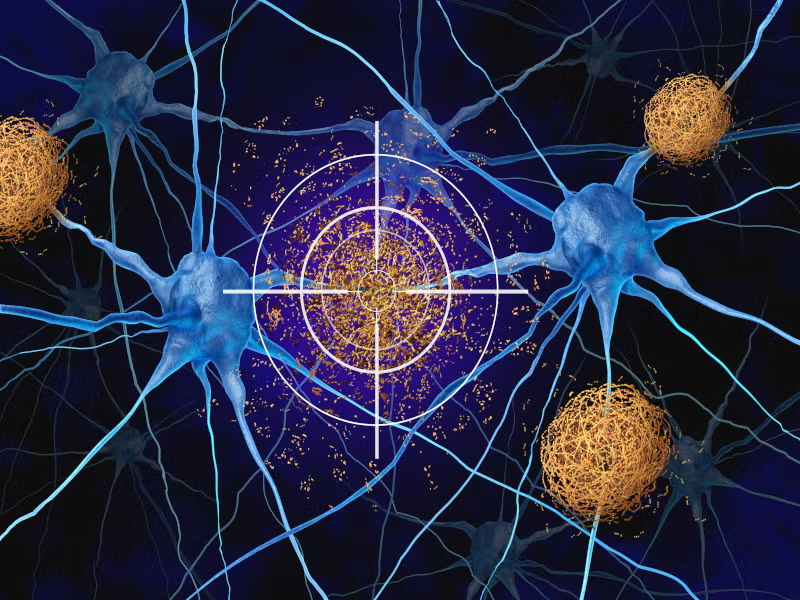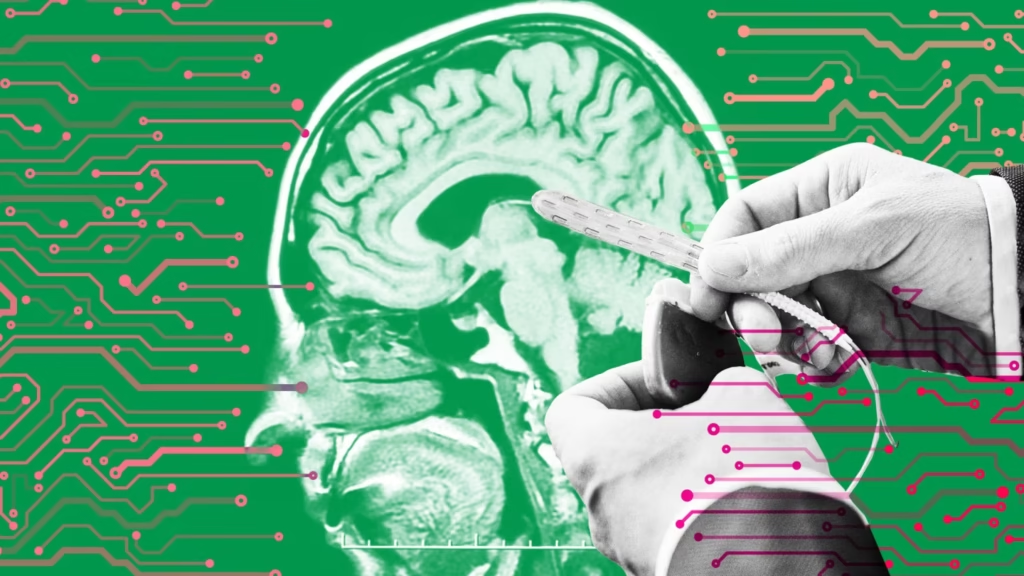What if your brain isn’t the smartest thing in the room anymore?
An AI model is creeping up on human intelligence — and a new Alzheimer’s drug might be changing what we thought was possible.
We’re not talking sci-fi. We’re talking right now.
Your brain. Your memory. Your future.
And no — this isn’t just another tech story.
GPT’s Growth Spurt
1. Back in 2018, GPT-1 made its debut with 117 million parameters.
2. More parameters generally mean better performance, but training costs skyrocket.
3. GPT-2 ramped up to 1.5 billion parameters, GPT-3 soared to 175 billion, and GPT-4 reportedly reached 1.8 trillion.
4. Rumor has it, GPT-5 is in the works with a whopping 17 trillion parameters.

DeepSeek’s Math Magic

5. Enter DeepSeek from China, claiming GPT-level performance with just 7 billion parameters.
6. But let’s not jump to conclusions.
7. Imagine a student focusing solely on math.
8. Their overall test score reflects all subjects combined.
9. If they ace math but neglect others, their total score suffers.
10. So, they’re a math whiz, but not the top overall scorer.
11. DeepSeek shines in math, while GPT excels across the board.
12. DeepSeekMath, their specialized model, outperformed GPT in math problems.
13. It was trained on math-focused data like Open Web Math and related web pages.
14. Though using 7 billion parameters, it’s built upon the general DeepSeek V3 model.
15. DeepSeek V3 boasts 671 billion parameters, so parameter count can be a matter of perspective.

AI vs. Brain: A Synaptic Showdown
16. In AI, nodes process information, and parameters connect these nodes, transmitting signals.
17. In our brains, neurons handle information, and synapses link neurons to pass signals.
18. While not identical, AI’s nodes and parameters mirror the brain’s neurons and synapses.

19. The human brain contains about 86 billion neurons, each connecting to roughly 7,000 synapses.
20. That’s over 100 trillion synaptic connections in total.
21. Just as parameters are vital in AI, synapses are crucial in our brains.
22. More synapses mean better connectivity and efficient information flow.
23. Hence, the emphasis on parameter count in AI development.
24. With GPT-5’s anticipated 17 trillion parameters, AI is approaching the brain’s complexity.

Alzheimer’s: The Amyloid Angle
25. Shifting gears to medical research on the brain.
26. A major focus is on dementia, particularly Alzheimer’s disease.
27. As we age, memory and thinking skills can decline, leading to dementia.
28. Alzheimer’s accounts for about 60–70% of dementia cases, first identified by Dr. Alois Alzheimer in 1906.
29. The World Health Organization (WHO) reports 57 million people worldwide live with dementia, projected to rise to 139 million by 2050.
30. In the U.S., approximately 6.9 million adults aged 65 and older have Alzheimer’s, expected to nearly double by 2060.
31. For pharmaceutical companies, this represents a rapidly growing market.
32. The leading theory suggests that Alzheimer’s progresses as amyloid-beta proteins accumulate in the brain over a decade.
33. A research team at France’s National Center for Scientific Research (CNRS) found that amyloid-beta may be behind impaired neuron function.
34. These protein clumps interfere with synaptic communication, leading to cognitive decline.
35. Understanding amyloid’s impact on synapses helps explain its role in Alzheimer’s.
36. As amyloid builds up, many patients experience significant deterioration in daily functioning within five years of early symptoms.
37. The medical community continues to debate whether amyloid plaques are the definitive cause of Alzheimer’s.
38. Due to this uncertainty, major pharmaceutical companies have invested billions over decades without successfully developing a definitive treatment.
39. Pfizer, for instance, ceased its Alzheimer’s drug development, deeming it unfeasible.

Leqembi: A New Hope
40. In a notable development, on January 6, 2023, the FDA granted accelerated approval to a new Alzheimer’s treatment.
41. Accelerated approval expedites the availability of treatments for serious conditions based on preliminary evidence.
42. This approach allows for early patient access while additional data is gathered for full approval.
43. The approved drug is lecanemab, marketed as Leqembi.
44. Leqembi was co-developed by U.S.-based Biogen and Japan’s Eisai.
45. The FDA described Leqembi as a groundbreaking therapy targeting the underlying mechanisms of Alzheimer’s disease.

46. This implies that Leqembi not only alleviates symptoms but also addresses disease progression.
47. Leqembi functions by removing amyloid-beta from the brain.
48. Its Phase 3 trial results are significant, supporting the amyloid-beta hypothesis in Alzheimer’s disease.
49. Despite supporting studies, the role of amyloid-beta in Alzheimer’s remains a topic of debate.
50. If blocking amyloid buildup truly proves effective in treating dementia, then the long-standing hypothesis would finally be validated.
51. This would also accelerate the development of new Alzheimer’s drugs by other pharmaceutical companies.
52. In clinical trials involving 1,795 early-stage dementia patients, those given Leqembi showed 27% less cognitive decline compared to those given a placebo.

Donanemab: The Challenger Emerges
53. The cost of Leqembi was set at $26,500 per year, aimed at early-stage Alzheimer’s patients.
54. It first launched in Japan (December 2022), but quickly gained attention in the U.S. following FDA approval.
55. The U.S. rollout positioned it as a premium option for Alzheimer’s treatment.
56. Without Medicare or insurance support, the annual price remains steep for many patients.
57. Considering the growing number of dementia patients and the need for ongoing treatment, insurance coverage remains a hot topic.
58. But then came a twist in the story—a new contender entered the ring.
59. The challenger? Donanemab, developed by U.S. pharma giant Eli Lilly.
60. While Leqembi slowed cognitive decline by 27%, Donanemab pushed that to 35%.
61. Timing mattered too.
62. The earlier patients began Donanemab, the better the outcome.

The Treatment Tiebreaker
63. In early-stage cases, Donanemab slowed cognitive decline by up to 60%, and reduced the chance of Alzheimer’s advancing to the next stage by 39%.
64. Nearly half of the patients treated with Donanemab experienced no further decline during the study — nearly double the success rate of the placebo group.
65. It’s also more convenient: Donanemab is given just once a month, while Leqembi requires two doses per month.
66. The FDA approved Donanemab in July 2024 under the brand name “Kisunla.”
67. Wider global rollout is ongoing, with clinical trials continuing in various countries.
68. The annual cost of Kisunla is estimated at around $33,000, slightly more than Leqembi.
69. Mechanism-wise, Leqembi targets amyloid-beta early — when fibers are just forming.
70. Donanemab, on the other hand, works when those fibers have already formed sticky plaques.
71. Because their modes of action differ, there’s a real possibility of combining both: Leqembi for early intervention, Donanemab for later stages.

72. Naturally, this put pressure on Leqembi to innovate.
73. With Donanemab performing better and being easier to use, competition heated up.
74. To stay in the game, Leqembi is developing a new subcutaneous injection version — no more hour-long IV drips.
75. Currently, both drugs are given through hour-long hospital infusions.
76. The new under-the-skin version of Leqembi could cut that down to just 30 seconds.
77. Even better, Biogen is working on an at-home auto-injector — like an insulin pen — for weekly self-dosing.
78. They’ve already submitted this new version to the FDA, aiming to make Alzheimer’s treatment quicker, easier, and home-friendly.

“Big Pills, Bigger Stakes”

Alzheimer’s treatments today aren’t one-and-done fixes — they’re long games.
The goal isn’t just to stop decline, but to stay ahead of it — dose by dose.
As Biogen and Eli Lilly race for the top spot, innovation is real…
But so is the price tag. For millions facing dementia, these advances offer new hope —
but also raise the question: Can better brains come without breaking the bank?
Meanwhile, AI like DeepSeek is impressing the world — and making some nervous.
Even the U.S. Navy is keeping its distance.
Funny how this story started with artificial intelligence,
and ended with the most human challenge of all:
remembering what really matters.
Discover more from Alphazen Dynamics
Subscribe to get the latest posts sent to your email.



